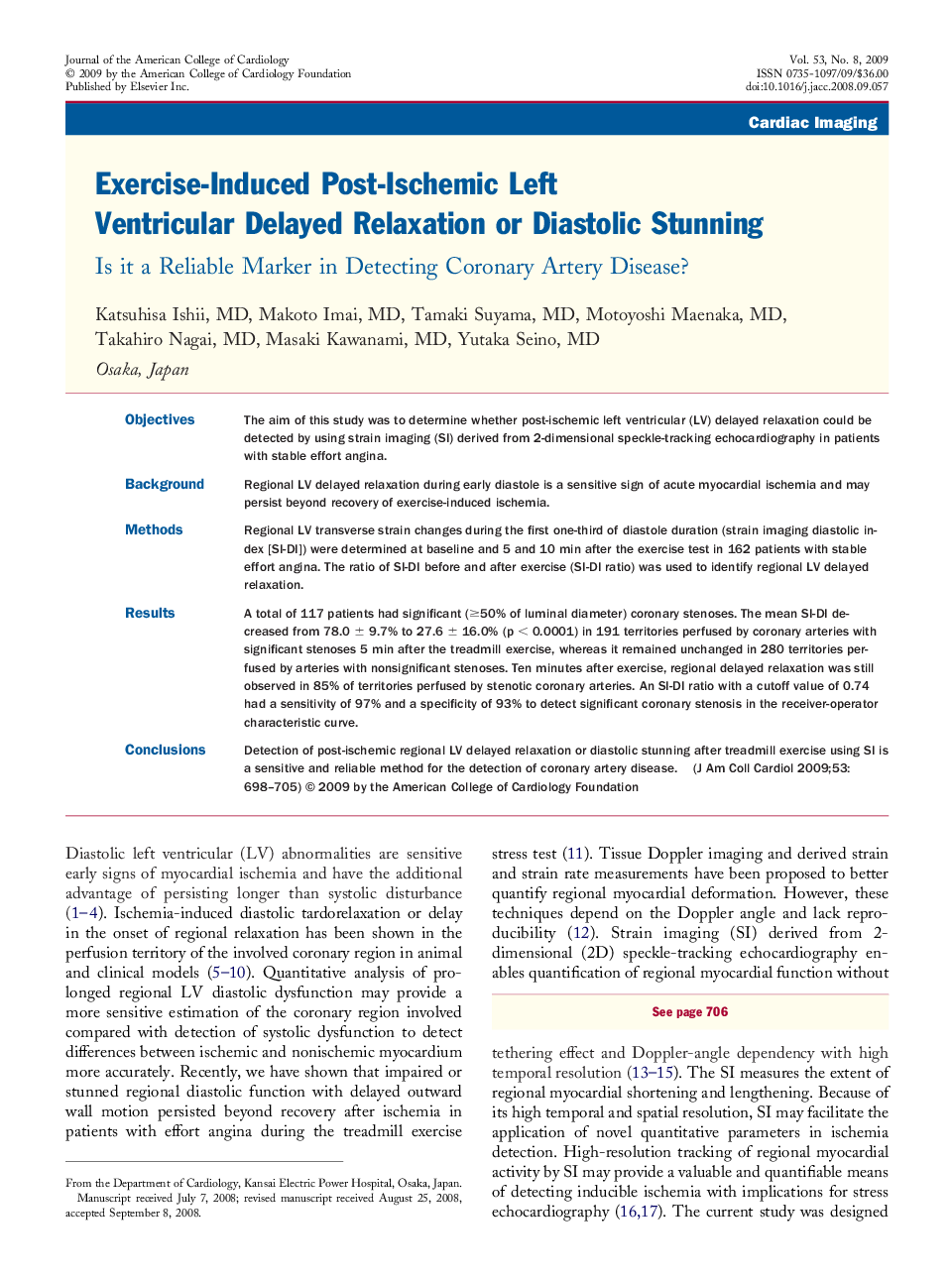| Article ID | Journal | Published Year | Pages | File Type |
|---|---|---|---|---|
| 2951166 | Journal of the American College of Cardiology | 2009 | 8 Pages |
ObjectivesThe aim of this study was to determine whether post-ischemic left ventricular (LV) delayed relaxation could be detected by using strain imaging (SI) derived from 2-dimensional speckle-tracking echocardiography in patients with stable effort angina.BackgroundRegional LV delayed relaxation during early diastole is a sensitive sign of acute myocardial ischemia and may persist beyond recovery of exercise-induced ischemia.MethodsRegional LV transverse strain changes during the first one-third of diastole duration (strain imaging diastolic index [SI-DI]) were determined at baseline and 5 and 10 min after the exercise test in 162 patients with stable effort angina. The ratio of SI-DI before and after exercise (SI-DI ratio) was used to identify regional LV delayed relaxation.ResultsA total of 117 patients had significant (≥50% of luminal diameter) coronary stenoses. The mean SI-DI decreased from 78.0 ± 9.7% to 27.6 ± 16.0% (p < 0.0001) in 191 territories perfused by coronary arteries with significant stenoses 5 min after the treadmill exercise, whereas it remained unchanged in 280 territories perfused by arteries with nonsignificant stenoses. Ten minutes after exercise, regional delayed relaxation was still observed in 85% of territories perfused by stenotic coronary arteries. An SI-DI ratio with a cutoff value of 0.74 had a sensitivity of 97% and a specificity of 93% to detect significant coronary stenosis in the receiver-operator characteristic curve.ConclusionsDetection of post-ischemic regional LV delayed relaxation or diastolic stunning after treadmill exercise using SI is a sensitive and reliable method for the detection of coronary artery disease.
